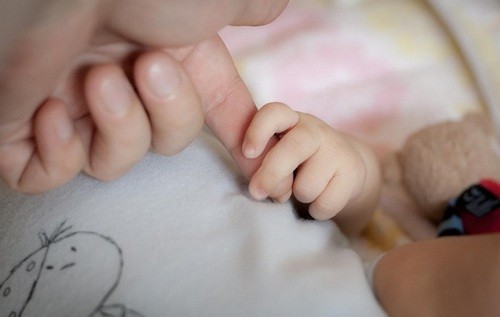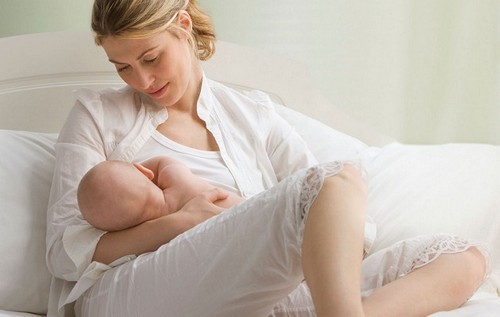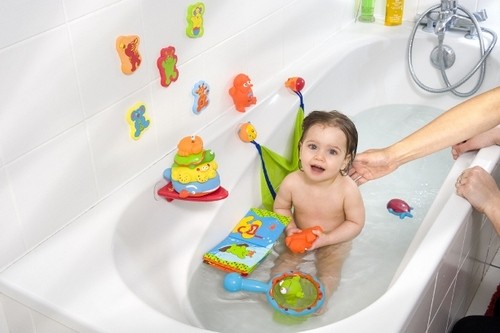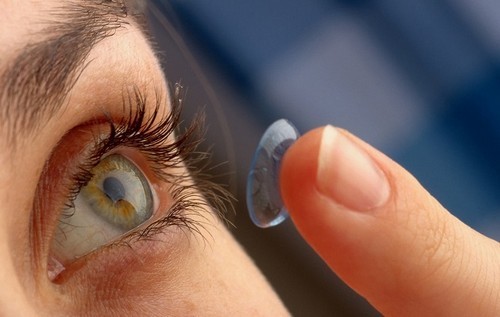The science of caring for a newborn is difficult but necessary. The primary task of the medical staff of the hospital and parents is to protect the child from all kinds of diseases and dangers, to give him due attention, care and protection.
The first minutes of a child’s life
Immediately after the birth of the baby, medical work produces a series of procedures called the first toilet of the newborn. These events begin with removal from the oral cavity and nasopharynx, with the help of a special suction, amniotic fluid. Next, the process of dressing and processing the umbilical cord is performed.
This happens in two stages:
- As soon as the baby is born, its umbilical cord is pulled by two Kocher clamps, pre-processed, completely sterile and safe. The distance between them is only two centimeters, while the first clamp is placed 10 cm from the umbilical ring. The space between the clamps must be treated with an iodine alcohol solution and then dissected with sterile scissors. The child is wrapped in a warm diaper and laid on a changing table, above which a special lamp for heating is installed.
- At the second stage, the umbilical cord is processed. With proper care for a newborn baby, his umbilical cord is sterilized with a napkin. The nurse firmly squeezes the rest of the umbilical cord with the thumb and forefinger and into the space between the Kocher branches, at a distance of 1 cm from the umbilical ring, Rogovin brackets are installed. The rest of the umbilical cord is cut off, and the section is carefully treated with a 10% solution of potassium permanganate.
The penultimate stage of the first toilet of the baby after childbirth is the treatment of the skin. A gauze cloth slightly moistened with vegetable or liquid paraffin allows easy and sterile removal of primordial grease and mucous secretions from the baby’s skin.
The final step in the care of the child after childbirth is a check for eye disease – the prevention of gonoblenorrhea. A 20% albucide solution is instilled into the baby’s eyes or the conjunctiva of the lower eyelids is treated with 1% tetracycline ointment. After 2 hours, the procedure is repeated. Also, at the last stage of the toilet, the girls are once instilled in the sexual gap a couple of drops of 1% silver nitrate solution.

First procedures after birth
After the primary toilet, the medical staff conducts an anthropometric analysis of the child. Nurses measure body weight and length, determine the circumference of the head, and measure the volume of the chest. After that, soft bandages with tags are put on the wrist of the child and mother, which indicate the name of the mother, the date and time of birth of the child, his gender, weight and length. And now, after a couple of hours, the mother and child are transferred to the postpartum ward – the ward for newborns.
Chamber for mother and baby
For those few days spent in the same room alone with the baby, the mother learns the first care of the newborn, acquires the most important skills that will later be useful to her at home.
In the postpartum ward, the neonatologist and pediatric nurse carefully examine the child. They remove the curd oil, the remains of which could remain on the body and perform a number of procedures every morning – they measure the temperature of the child, weigh them, give an assessment of the general condition of the baby and write it all down in the children’s developmental history.
The doctor tells the mother what are the features of caring for the newborn in the first and subsequent days of life – it must be washed every time before feeding. Wash the child with warm running water, while using baby soap. Also, the baby must be washed during swaddling. So that there is no diaper rash on the skin of the buttocks, it is lubricated with a special cream or 1% tannin ointment.
Morning toilet in the hospital
Every morning, medical staff in the early days of the newborn cares for him. The face and eyes are gently wiped with cotton swabs moistened in a solution of furacilin. In this case, each eye is wiped with a separate swab, from the outer corner of the eye to the inside. The staff clean the nose and ears with oil-treated cotton flagella.
If a child has thrush of the oral mucosa, then the cavity is treated with brilliant green or a solution of borax in glycerin.
Watching the belly button
In particular, proper care for the newborn includes the treatment of the remainder of the umbilical cord. After 12 hours from the moment the baby was born, the sterile dressing is removed from the navel. The nurse thoroughly washes her hands and treats the remainder of the umbilical cord with a special solution consisting of ethyl alcohol and potassium permanganate.
This procedure is repeated daily until the mother and child are in the ward, or until the umbilical cord falls off on its own. If this did not happen in the maternity hospital, then the medical staff must hold a conversation with their mother, which tells how to care for the umbilical cord at home. Mothers also explain how to treat the umbilical wound after the remnants of the umbilical cord fall away.

The kid was brought home
First you need to prepare the room for the arrival of the child. In the room where the crib is located, it is necessary to maintain cleanliness – twice a day do wet cleaning and ventilate several times, for 15 minutes. In this case, you need to monitor the air temperature in the room, since it must be constant, not more than 22 and not less than 20 degrees. Lighting both in the daytime from sunlight, and in the evening from lamps and lamps, should be moderate. Cleanliness, silence and calm are the main friends of the child, especially in the first months of life.
Direct sunlight should not fall on the baby’s crib, it should not be drafted and heaters should not be heated – we don’t want the baby to get sick. Most often, a changing table is placed near the crib. This is convenient, because just before you go to the cradle and after sleeping the child you can change clothes without fear that he will freeze. It is also convenient to do exercises for development and massage on the table.
A child has the ability to find dirt where it could not be, so all his things consist of soft, non-synthetic fabrics that can be easily washed and boiled if necessary. Toys should not be too coarse, and all labels and tags must be carefully removed. Clean linen should be stored separately from dirty things, washing your baby’s clothes is separate from an adult wardrobe.
First-aid kit for a newborn
In pharmacies, especially for newborns, first-aid kits are sold containing the necessary drugs and devices for diagnosing and providing first aid to the baby. They include:
- Sterile cotton;
- Nipples for a bottle of rubber;
- Body thermometer;
- Thermometer for water;
- Baby cream;
- Powder;
- Potassium permanganate;
- Iodine;
- Zelenka;
- Furatsilin;
- Vaseline oil;
- A pair of sterile bandages.
In addition, parents need to purchase a glass jar in which cotton wool will be placed. The lid of the jar should close well to prevent the entry of germs. It is also worth buying a pan for boiling a nipple, a pan with a tight-fitting lid for already processed nipples and bottles, a rubber heating pad, a small enema and a tube for venting gases.
We care for the navel at home
The umbilical wound heals completely by the end of the third week, which means that care for the newborn in the hospital does not end. The wound is treated every day as follows: with the left hand, push the skin up and down along the edge of the wound, and with the right hand treat the wound with hydrogen peroxide, in which a cotton swab is moistened. With the same stick, the crusts of gore are removed. Further, in the center of the umbilical wound, spend a stick soaked in brilliant green.
Daily toilet
The daily toilet begins in the morning, before the first feeding, strictly in a certain order. To begin with, the face of a newborn is washed with warm boiled water, using a cotton swab or just a clean hand. The eyes are processed in the same way, they direct the swab from the outside of the eyes to the inside. The nose is treated with cotton swabs dipped in liquid paraffin. The ears are wiped with a damp cloth, both inside and behind the sink. Then, places prone to increased diaper rash are processed – folds and axillae.
According to the advice from books on caring for a newborn, the baby’s skin is treated with baby cream, and the buttocks and perineum are cleaned with baby soap and running water. In this case, girls need to be washed in the direction from front to back, so as not to bring the infection into the genitourinary system. The child is washed several times a day, after urination and bowel movement.
Handle the mouth
In a child, the mucous cavity is tender, it can be easily injured. Moreover, its processing is not required, except when the baby has thrush. When diagnosing this disease, the mucous surface of the mouth is moistened with a solution of baking soda – 1 teaspoon is diluted in 1 cup of boiled water, brought to room temperature. The solution is applied to a cotton swab and the mother, gently opening the baby’s mouth, treats the surface. This is repeated every 3 hours, immediately before feeding. Parents are advised to exercise caution – thoroughly boil nipples, bottles, as well as process dummies.
Bathing hygiene
An important part in the question of how to care for a newborn baby at home is bathing. It is best to swim before the very last evening feeding, or one feeding before it. To do this, you need a special bath. Bathing takes 5-7 minutes. Before the umbilical wound of the baby has healed, it is necessary to bathe it exclusively in boiled water of body temperature. The room where the child takes bath should not be drafted and heated to a temperature of at least 23 degrees. Before each bath, the bath must be disinfected with soap and doused with boiling water.
Before pouring water, parents should prepare everything that is necessary for water procedures. This is a jug from which the child will be doused after bathing, a thermometer to measure the temperature of the water, as well as a baby soap, which does not include coloring pigments and fat. The child will need a soft glove for soaping and cream for the smallest.
On the changing table, by that time, clean linen should be laid out. In the cold season, it is recommended to warm it up.
How to swim
It is necessary to bathe the child every day. To care for the umbilical wound and generally for the skin care of a newborn, it is recommended to periodically dilute the water with herbal collection – this is useful both for the child’s body and for his mental state – many herbs soothe not only muscles and relieve skin irritation, but also help to cope with nervous and restless state.
Wash the baby with gentle, blotting movements using a clean diaper or a soft baby towel. At the same time, you do not need to wipe the baby in his room – as long as you reach the bathroom with him in your arms, he may catch a cold. Only after the water has been removed, the baby is wrapped and carried to the changing table.
stroll
In the summer, you can walk with your child on the second day after discharge, in winter, after 2-3 weeks, depending on the weather. For the first time, the child should be outdoors at a temperature of at least minus 5 degrees. The first walk lasts 10 minutes, the second 20, the third 50, etc. In a month, it will be possible to walk with the baby for at least one and a half hours. Walking helps to increase appetite, normalize blood circulation, as well as better sleep, physical and psychological condition in general



